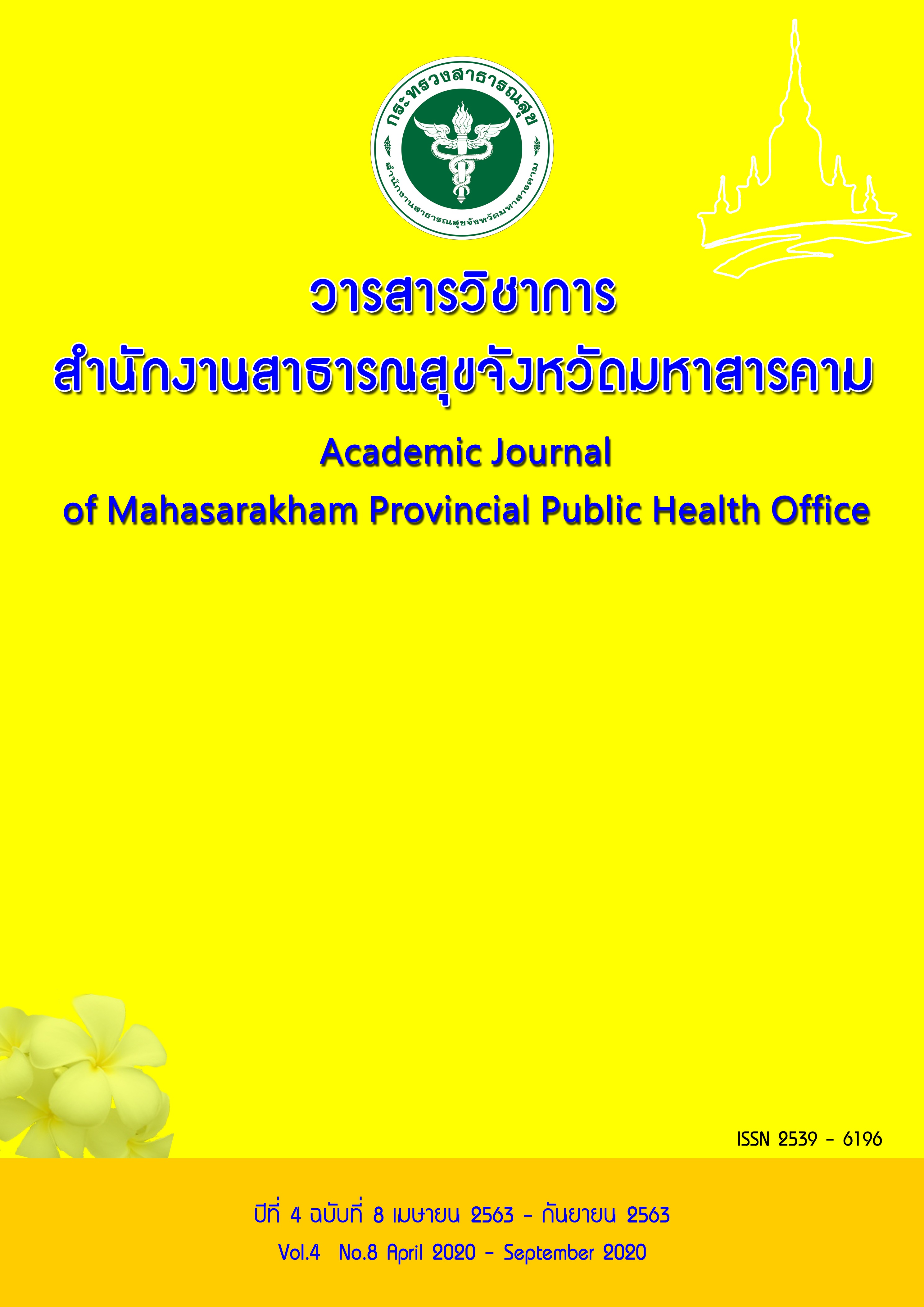การพยาบาลผู้คลอดที่มีภาวะช็อกจากการตกเลือดหลังคลอด : กรณีศึกษา
Abstract
บทคัดย่อ
ภาวะตกเลือดหลังคลอดเป็นภาวะแทรกซ้อนทางสูติกรรมที่พบบ่อยและเป็นสาเหตุการตายที่สำคัญของมารดาทั่วโลก ซึ่งมีปัจจัยเสี่ยงหลายประการที่ส่งเสริมให้เกิดภาวะตกเลือดหลังคลอด พยาบาลผู้ดูแลในห้องคลอดจำเป็นต้องมีทักษะในการประเมินปัจจัยเสี่ยงและมีทักษะทางการพยาบาลในการดูแลภาวะตกเลือดหลังคลอด เพื่อป้องกันไม่ให้เกิดภาวะแทรกซ้อนแก่มารดาและทารกในครรภ์
วัตถุประสงค์: เพื่อศึกษาการพยาบาลผู้คลอดที่มีภาวะช็อกจากการตกเลือดหลังคลอด โดยเปรียบเทียบกรณีศึกษา 2 ราย
วิธีการศึกษา:เป็นการศึกษากรณีศึกษาเปรียบเทียบผู้คลอดทางช่องคลอดที่มีภาวะช็อกจากการตกเลือดหลังคลอด 2 ราย โดยเปรียบเทียบประวัติการตั้งครรภ์ปัจจัยเสี่ยง และกระบวนการพยาบาล เครื่องมือที่ใช้ในการศึกษาได้แก่ เวชระเบียน การสัมภาษณ์ผู้ป่วยและครอบครัวระยะเวลาการศึกษาผู้คลอดรายที่ 1 เดือนตุลาคม 2561 และผู้คลอดรายที่ 2 เดือนพฤษภาคม 2562
ผลการศึกษา: ผู้คลอดทั้ง 2 ราย มีปัญหาทางการพยาบาลที่เหมือนกัน คือ ภาวะช็อกจากการตกเลือดหลังคลอด และมีความแตกต่างในประเด็นสาเหตุ ความรุนแรงของภาวะซ็อกและภาวะแทรกซ้อนที่เกิดขึ้น รวมทั้งความยากของการปฏิบัติการพยาบาลโดยผู้คลอดรายที่ 1 อายุ 34 ปี ตั้งครรภ์ที่ 3 อายุครรภ์37 สัปดาห์ 5 วัน มีภาวะความดันโลหิตสูงระหว่างตั้งครรภ์ มาด้วยอาการปวดท้องและทารกไม่ดิ้น ตรวจพบทารกเสียชีวิตในครรภ์ไม่พบภาวะรกลอกตัวก่อนกำหนดคลอดทางช่องคลอดทารกเกิดไร้ชีพน้ำหนัก 2,150 กรัม หลังคลอดตรวจพบ มีก้อนเลือดที่หลังรกและมดลูกหดรัดตัวไม่ดีจากภาวะรกลอกตัวก่อนกำหนด มีการเสียเลือดรวม 1,200 มิลลิลิตร พบภาวะแทรกซ้อนของลิ่มเลือดแพร่กระจายในหลอดเลือดต้องรับการรักษาในหอผู้ป่วยหนัก และพบปัญหาทางด้านจิตใจจากการสูญเสียทารกในครรภ์ ส่วนผู้คลอดรายที่ 2 อายุ 37 ปี ตั้งครรภ์ที่ 2 อายุครรภ์ 39 สัปดาห์ 1 วัน มีภาวะซีดขณะตั้งครรภ์ มาด้วยอาการเจ็บครรภ์และมีมูกเลือดออกทางช่องคลอด ทารกคลอดน้ำหนัก 3,760 กรัม หลังคลอดพบว่า มีรกค้าง ทำให้มีเลือดออกมากทันทีจำนวน 400มิลลิลิตรจึงได้รับการทำหัตถการล้วงรกมีการเสียเลือดรวม 1,100 มิลลิลิตร โดยผู้คลอดทั้ง 2 ราย ได้รับการรักษาหลักที่เหมือนกัน คือ ได้รับสารน้ำ เลือด ยาเพิ่มการหดรัดตัวของมดลูก ร่วมกับการนวดคลึงมดลูกและการเฝ้าระวังสัญญาณชีพอย่างใกล้ชิด
บทสรุป: ภาวะช็อกจากการตกเลือดหลังคลอดมีภาวะแทรกซ้อนและสาเหตุที่แตกต่างกัน พยาบาลจำเป็นต้องมีสมรรถนะในการประเมิน การวินิจฉัยภาวะเสี่ยงต่อการเสียเลือดตั้งแต่แรกรับ การร่วมทีมสหสาขาวิชาชีพในการแก้ไขภาวะช็อกที่เหมาะสมและทันเวลา ควบคู่กับการใช้แนวปฏิบัติการพยาบาลภายใต้หลักฐานเชิงประจักษ์ เพื่อให้การพยาบาลผู้คลอดที่มีภาวะตกเลือดหลังคลอดได้อย่างมีประสิทธิภาพ อันจะส่งผลลดอัตราตายผู้คลอดและทารกในครรภ์
คำสำคัญ: ภาวะตกเลือดหลังคลอด, การพยาบาลภาวะช็อกจากการตกเลือด


